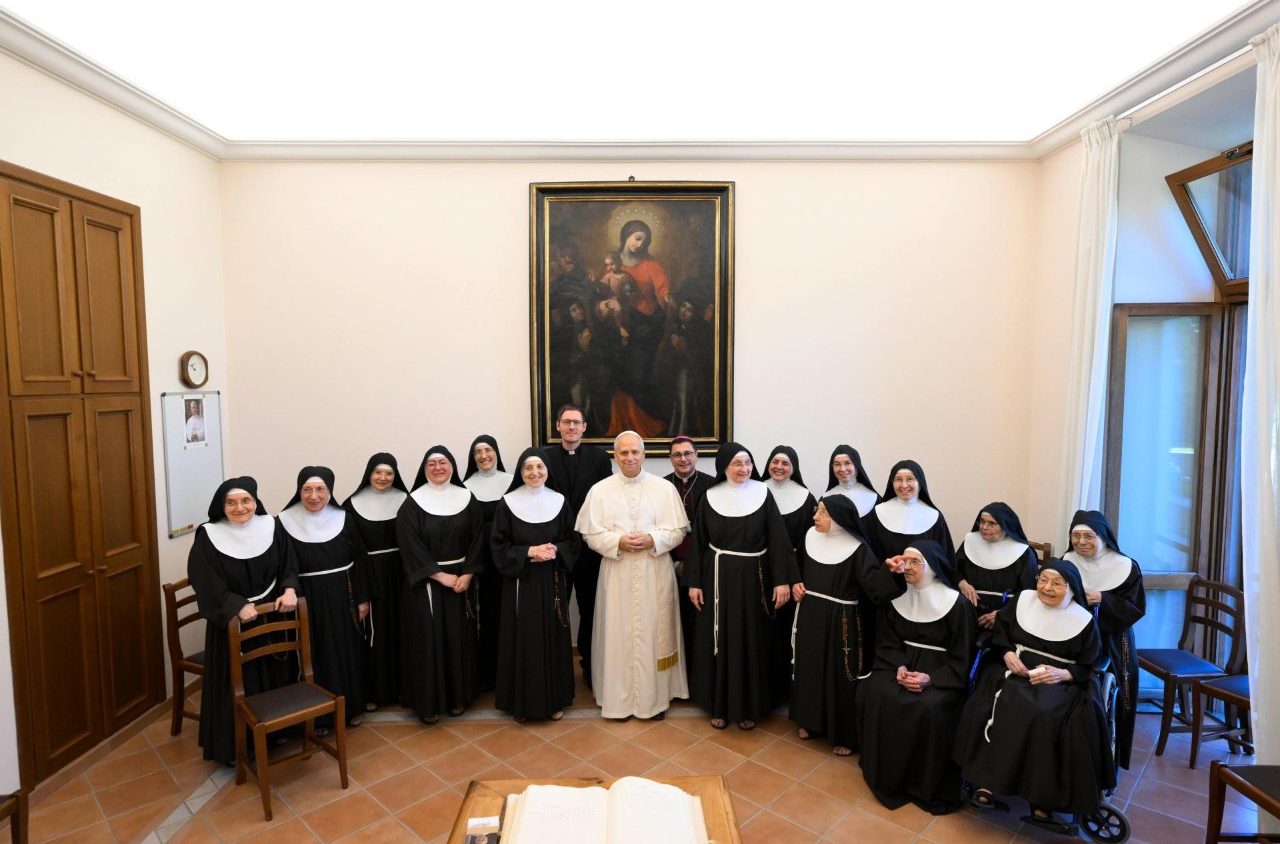Albano Laziale – After celebrating Holy Mass in honor of Virgo Fidelis with the Carabinieri Corps, this morning Pope Leo XIV crossed the threshold of the Monastery of the Immaculate Conception of the Poor Clares in Albano. A silent and profound gesture, which reveals the Pope’s love and attention for contemplative life.
He was welcomed by Mother Maria Donata Reboldi, originally from Brescia, abbess since 2023 and a Poor Clare nun for thirty-five years. Pope Leo XIV spent time in conversation with the sisters, accompanied by H.E. Mons. Vincenzo Viva, Bishop of Albano, his personal secretary, and the chaplain of the community. Also present were Fr. Edgard Iván Rimaycuna Inga, the Pope’s secretary, and Mons. Leonardo Sapienza. The Pope listened attentively to their stories and witness. But above all, he asked them to pray for the Church and for his ministry as Bishop of Rome.
The monastery is currently home to 15 cloistered sisters, guardians of a way of life which, though hidden, is essential to the Church. Living the Gospel in radical fraternity and poverty, following the example of Clare of Assisi, is their mission. Their life – marked by liturgy, Eucharistic adoration, and hidden work – becomes a path of vocational accompaniment for those who, amidst the noise of the world, seek a threshold of silence where they might learn to listen to God. In fact, the community is also dedicated to this particular ministry of vocational discernment.
In the monastery church, Pope Leo XIV paused in prayer before the remains of Venerable Sister Maria Chiara Damato, a Poor Clare originally from Puglia who died in 1948 with a reputation for holiness. A discreet and radiant figure, she lived her vocation by offering up her sufferings and silence for priests and vocations. On April 2, 2011, Benedict XVI recognized her heroic virtues and declared her Venerable. Since then, her body has rested at the heart of the monastery, like a hidden seed that continues to bear fruit.

A vital presence in Albano
The monastery itself has centuries-old roots. Founded in 1631 by Sister Francesca Farnese, a woman of reform and deep spiritual fervor, it received the blessing and protection of Pope Urban VIII, who wanted to meet her personally. “This is a great servant of God,” the Pope said, struck by her humility and the depth of her witness. It is remarkable – though perhaps not accidental – that nearly four centuries later, another Pope, also animated by a desire for reform and authenticity, chose to sit in that very house to listen to the spiritual daughters of that great servant of God. Today’s visit is one of those gestures that elude the spotlight but remain in the deep memory of the Church.
The Pope toured parts of the monastery and expressed his closeness to the community that sustains him through prayer. In the heart of a summer that seems to unfold swiftly amid rest, prayer, and institutional meetings, the Pope chose to enter a place where time follows another rhythm, where words are measured, and life becomes a constant response to a Presence. And it is precisely there, in the silence of the cloister, that the revolution of love Pope Leo XIV spoke of on Sunday – while reflecting on the Gospel of the Good Samaritan – continues to grow. And perhaps, within these walls, he found sisters who have chosen to begin that revolution of love by offering their entire lives to the Lord Jesus, holding nothing back.
p.M.R.
Silere non possum